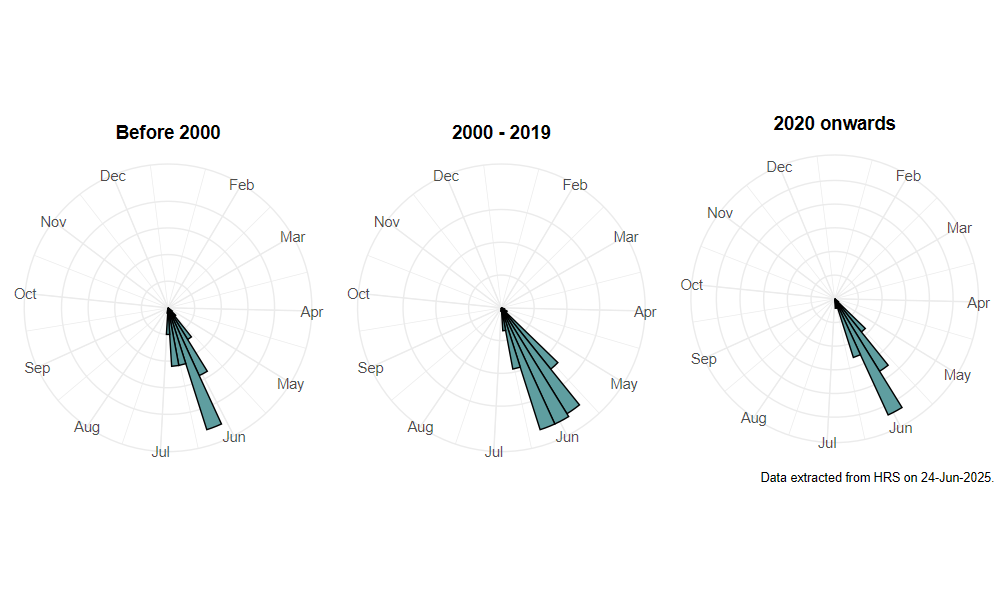Microdon devius (Linnaeus, 1761)
Identification
Identification difficulty = 3. ![]()
![]() according to Ball & Morris, 20241
according to Ball & Morris, 20241
Biology
In southern England, M. devius is closely associated with short turfed Chalk downland, but in East Anglia and Oxfordshire the records are from fens. The larva is a predator of ant broods within nests of the Yellow Meadow Ant Lasius flavus. Adults rarely stray far from their parental ant nests and may be found sitting on vegetation close to ant hills. They are not usually known as flower visitors, but have been reported from flowers of Ox-eye Daisy Leucanthemum vulgare.
Flight period
The following plots show the number of unique records per week excluding those reported to be of immature stages.

Status
Lower Risk (Near Threatened) - Ball & Morris, 20142. Vulnerable (RDB2) - Falk, 19913 and Shirt, 19874.
Distribution
This is mainly a species of southern England but there are outlying populations in West Norfolk and East Suffolk, and from Meirionnydd and old records from Oxfordshire and from the Wyre Forest. There are post-1990 records from Buckinghamshire, North Hampshire, West Sussex, and Meirionnydd but the majority of modern localities lie on the North Downs of Surrey.

Trends
The following plots show the Frescalo TFactor vs year and a map of the rescaled frequency (all records) for the species.
-
Ball, S., & Morris, R. (2024). Hoverflies of Britain and Ireland. WILDGuides (3rd ed.). Oxford: Princeton University Press. ↩
-
Ball, S., & Morris, R. (2014). A review of the scarce and threatened flies of Great Britain. Part 6: Syrphidae. ( No. 9). Species status (pp. 1–130). Peterborough: JNCC. ↩
-
Falk, S. (1991). A review of the scarce and threatened flies of Great Britain. ( No. 39). Research and Survey in Nature Conservation (pp. 1–194). Peterborough: NCC. ↩
-
Shirt, D. (Ed.). (1987). Red Data Books: 2. Insects. Peterborough: NCC. ↩